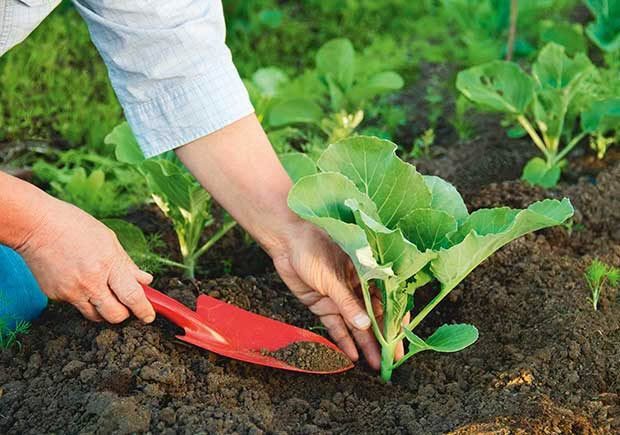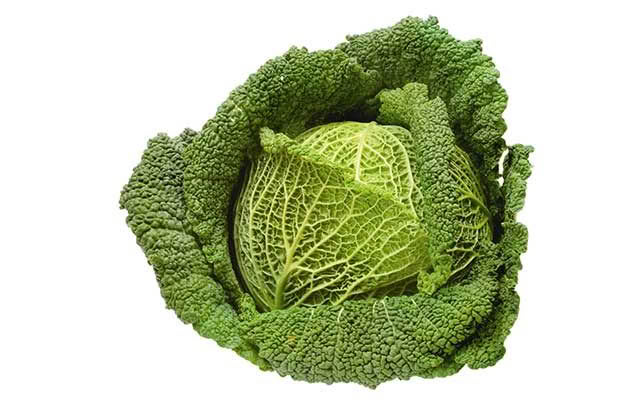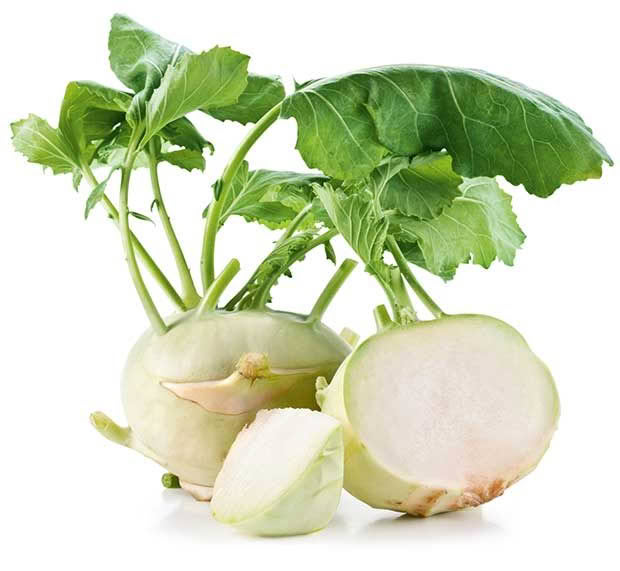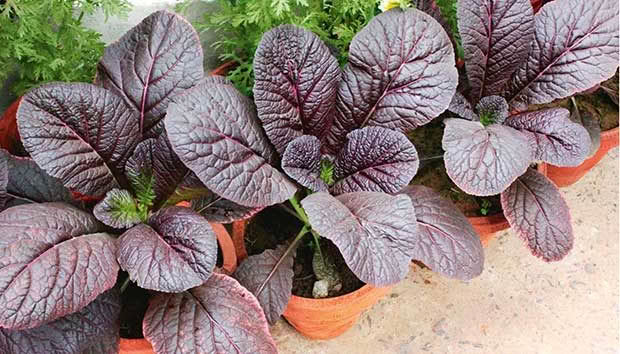October garden guide: plant cabbages, try kohlrabi and sow summer vegetables

The summer garden is starting to take shape this month.
Words: Jane Wrigglesworth
Cabbages like a rich soil with plenty of compost, aged manure or worm castings dug in, and are surprisingly resistant to drought, although less water means smaller plants and smaller heads. This drought tolerance comes from their ancestor, the wild cabbage, which grows in an exceptionally dry environment.
Cabbages, as with all brassicas, like their soil firm. When grown in loose soil, plants tend to grow tall and leggy with loose heads. Before planting, firm the soil with your heels or by pressing down on a bucket so that you have a depression in the soil. I like this method best as the bucket-sized depression left in the soil helps moisture to be directed to the roots of the plants. Make a hole in the depressed soil big enough to accommodate your cabbage seedlings and plant, firming in with your fingers. Plant the seedlings deep, up to where their first leaf grows out from the stem.

✿ Plant seedlings of cabbages, cauliflowers and kohlrabi.
✿ In warmer areas, beans, pumpkins and sweet corn can be sown directly in the ground. Wait another month in cooler areas or sow in trays for planting out later.
✿ Give kohlrabi a try if you haven’t before. Like all brassicas, kohlrabi is a heavy feeder, so dig plenty of compost into the soil before planting. Water regularly to encourage quick growth and you can harvest the swollen stems in 8-10 weeks.

Kohlrabi.
✿ Sow seeds or plant seedlings of lettuce, leeks and silverbeet.
✿ Plant passionfruit, rhubarb and tamarillos.
✿ Sow seeds of beetroot, carrots, parsley, radishes and silverbeet directly into the ground.
✿ Sow seeds of capsicums, courgettes, cucumbers, chillies, eggplants and tomatoes in trays for planting out later.
✿ Continue planting potatoes in compost-enriched soil.

✿ If you like your greens spicy, grow red mustard. This colourful ‘green’ is a showy rouge with pale green leaf veins. Eat the raw leaves in salads and sandwiches for a wasabi-like bite or add them at the last minute to stir-fries for a more mellow taste.
Love this story? Subscribe now!
 This article first appeared in NZ Lifestyle Block Magazine.
This article first appeared in NZ Lifestyle Block Magazine.
